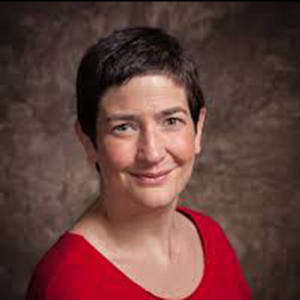New kids on the signaling block
Signal relay in eukaryotes enables proper response to chemical or physical signals received by the cell. We now understand how many of the canonical components of signaling pathways exert their functions, including the mode of activation of many kinases and the relationships among receptors, scaffolds and downstream effectors. This understanding has been key to the development of therapeutics targeting signaling components. Yet, from receptors to enzymes such as kinases, phosphatases, ubiquitin ligases and deubiquitinases, the signaling machinery still holds many mysteries.
In this session, we will focus on atypical signaling mechanisms, from the discovery of new catalysis within the kinome superfamily and noncanonical ubiquitination to the role of metals such as copper in signaling. We also discuss the emergence of pseudoenzymes: These allosteric signaling scaffolds are defined by their structural and sequence homology to canonical enzymes such as kinases and phosphatases, but they lack catalytic activity and remain relatively unexplored biologically and as potential drug targets.
We also will discuss how improvements in phosphoproteomics, genetic screens, and affinity and proximity proteomics permit us to globally assess specific aspects of signal transduction and shine new lights on poorly characterized enzymes, scaffolds and substrates.
Keywords: signal transduction, phosphorylation, ubiquitination, post-translational modification, pseudoenzymes, mass spectrometry, CRISPR screens, structural biology, interaction mapping
Who should attend: everyone who likes taking the road less traveled and those interested in good detective stories
Theme song: “Halo” by Beyoncé
This session is powered by ligands and receptors.
Talks
- CRISPR sensors for signaling — Stéphane Angers, University of Toronto
- Tracing copper utilization by kinase signal transduction pathways: Implications for cancer cell processes — Donita Brady, University of Pennsylvania
- How do signaling pseudoenzymes work? — Patrick Eyers, University of Liverpool
- Proximity-dependent sensors for signaling — Anne-Claude Gingras, Mount Sinai Hospital
- Proteome-scale amino-acid resolution footprinting of protein-binding sites in the intrinsically disordered regions — Ylva Ivarsson, Uppsala University
- Structural basis for signaling by the HER3 pseudokinase — Natalia Jura, University of California, San Francisco
- Defining pseudoenzymes in glycosylation pathways — Natarajan Kannan, University of Georgia
- Cell signaling by protein tyrosine phosphatases — Hayley Sharpe, Babraham Institute, Cambridge
- Expanding the kinome — Vinnie Tagliabracci, University of Texas Southwestern Medical Center
- Pseudoenzyme classification — Janet Thornton, European Molecular Biology Laboratory
- A high-dimensional map of phosphorylation-dependent signaling in budding yeast — Judit Villén, University of Washington
- Noncanonical ubiquitination — Satpal Virdee, University of Dundee
Learn more
Check out all ten thematic symposia planned for the 2022 ASBMB annual meeting:
Enjoy reading ASBMB Today?
Become a member to receive the print edition four times a year and the digital edition monthly.
Learn moreFeatured jobs
from the ASBMB career center
Get the latest from ASBMB Today
Enter your email address, and we’ll send you a weekly email with recent articles, interviews and more.
Latest in Science
Science highlights or most popular articles

Using DNA barcodes to capture local biodiversity
Undergraduate at the University of California, Santa Barbara, leads citizen science initiative to engage the public in DNA barcoding to catalog local biodiversity, fostering community involvement in science.

Targeting Toxoplasma parasites and their protein accomplices
Researchers identify that a Toxoplasma gondii enzyme drives parasite's survival. Read more about this recent study from the Journal of Lipid Research.

Scavenger protein receptor aids the transport of lipoproteins
Scientists elucidated how two major splice variants of scavenger receptors affect cellular localization in endothelial cells. Read more about this recent study from the Journal of Lipid Research.

Fat cells are a culprit in osteoporosis
Scientists reveal that lipid transfer from bone marrow adipocytes to osteoblasts impairs bone formation by downregulating osteogenic proteins and inducing ferroptosis. Read more about this recent study from the Journal of Lipid Research.

Unraveling oncogenesis: What makes cancer tick?
Learn about the ASBMB 2025 symposium on oncogenic hubs: chromatin regulatory and transcriptional complexes in cancer.

Exploring lipid metabolism: A journey through time and innovation
Recent lipid metabolism research has unveiled critical insights into lipid–protein interactions, offering potential therapeutic targets for metabolic and neurodegenerative diseases. Check out the latest in lipid science at the ASBMB annual meeting.


